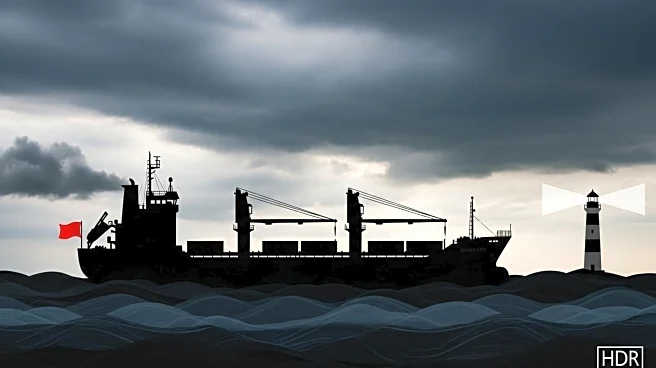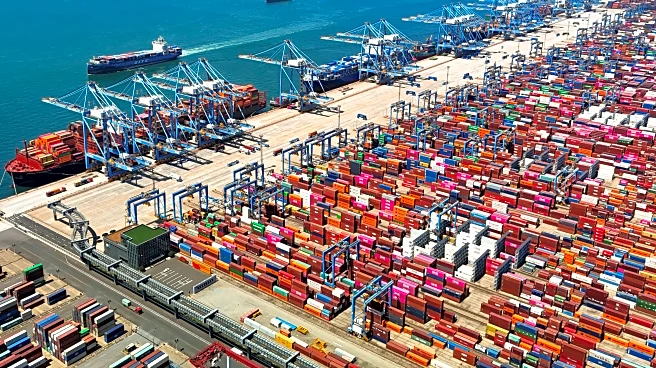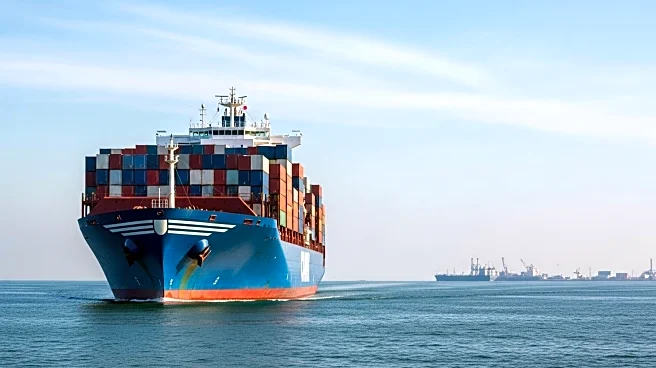What's Happening?
Ocean freight carriers are grappling with confusion as new U.S. port fees on Chinese-built ships are set to take effect. The fees, imposed by the U.S. Trade Representative, target vessels with links to China, including those financed by Chinese entities. The fees are structured in two tiers: one for vessels owned or operated by Chinese entities, and another for non-Chinese carriers operating Chinese-built vessels. The first tier charges $50 per net ton, increasing to $140 by 2028, while the second tier charges $18 per net ton, rising to $33 by 2028. The fees have prompted shipowners to reconsider their financing structures, with many seeking non-Chinese financing to avoid potential financial hits. The situation is further complicated by retaliatory fees imposed by China on U.S.-flagged ships.
Why It's Important?
The introduction of these port fees has significant implications for the international shipping industry, particularly for U.S. carriers and shipowners with Chinese financing. The fees could lead to increased operational costs, affecting profitability and competitiveness. The confusion surrounding the fees may result in disruptions in shipping operations and financial planning. Additionally, the retaliatory measures by China could escalate tensions between the two countries, impacting trade relations and shipping routes. The situation underscores the complexities of global maritime finance and the geopolitical factors influencing industry dynamics.
What's Next?
As the fees are set to be implemented, shipowners and carriers are likely to seek clarity from the U.S. Trade Representative on the definitions and exemptions related to Chinese ownership and financing. The industry may witness a shift in financing strategies, with companies exploring non-Chinese options to mitigate risks. The ongoing retaliatory measures by China could lead to further diplomatic negotiations or adjustments in trade policies. Stakeholders in the shipping industry will need to closely monitor developments and adapt their strategies accordingly.
Beyond the Headlines
The fees highlight broader issues in international trade and finance, including the reliance on Chinese shipbuilding and financing. The situation may prompt discussions on diversifying supply chains and reducing dependency on specific countries for critical infrastructure. The geopolitical tensions could also influence future regulatory frameworks and trade agreements, shaping the global maritime landscape.











